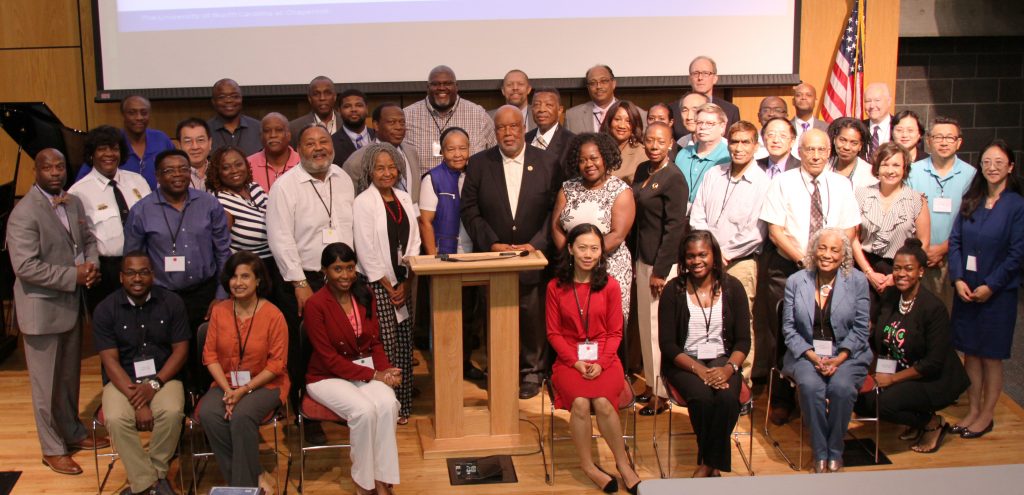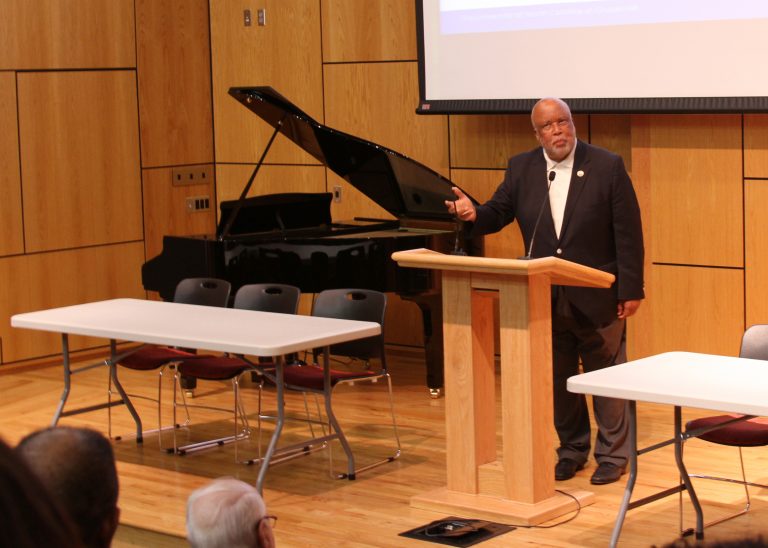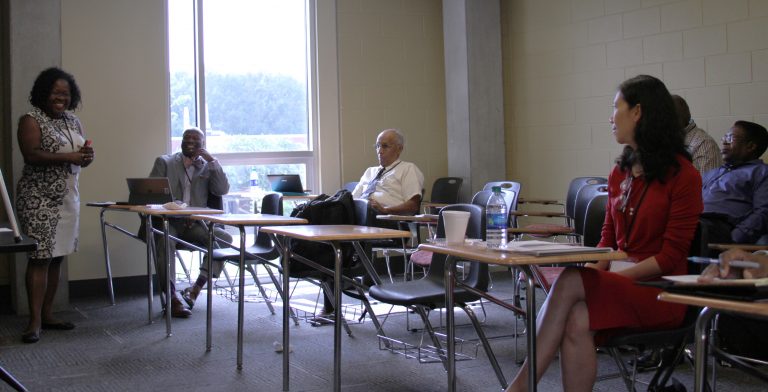
The Department of Homeland Security’s (DHS) Coastal Resilience Center of Excellence (CRC) hosted their first Historically Black Colleges and Universities (HBCU) Flood and Hurricane Meeting Aug. 3-4, 2017, on the campus of Tougaloo College in Jackson, Miss. The CRC university network includes 21 universities and colleges from throughout the country.
More than 30 researchers and other professionals representing 21 HBCUs from Virginia, Texas, Tennessee, North Carolina, Mississippi, Maryland, Georgia, Florida, Arkansas, Alabama and the District of Columbia attended the meeting. The HBCU representatives interacted with CRC researchers on issues related to response and recovery from natural disasters within minority communities. Because of their locations, historical significance, and positive reputations within their surrounding communities, HBCUs are likely to be able to help improve outcomes within minority communities.
Stephanie Willett, a program manager within the DHS Science and Technology Directorate (S&T) Office of University Programs (OUP), assisted with organizing the meeting. As program manager she has worked intensely with various HBCUs for the past nine years. She has overseen the management of grants, internships and summer programs intended to increase capabilities and involvement of HBCUs in homeland security mission space. The meeting provided an opportunity for HBCUs with ties to S&T and the Federal Emergency Management Agency to interact and identify synergistic opportunities for future work and opportunities.
U.S. Rep. Bennie Thompson of Mississippi, Ranking Member of the House Committee on Homeland Security, gave the keynote address at the event. Rep. Thompson, a Tougaloo College graduate, spoke about the partnership DHS has with HBCUs and the importance of diversity within the universities that are involved with DHS.
“When I went to meetings [at DHS], there was no one who looked like Bennie Thompson, and I wondered, why?” Rep. Thompson said. “I am trying to make sure the playing field looks like America.”
Rep. Thompson said that through dealing with multiple hurricanes in the Gulf region of Mississippi – including Katrina and Rita– he began to better understand the gaps in emergency management planning for underserved communities. These communities are often disproportionately impacted by natural hazards, he said, and a mission for HBCUs is to train future professionals to provide a talented, local workforce for major emergency management functions.
“We want to, over time, grow that product so we have it here locally,” Rep. Thompson said.
The event featured presentations on CRC education projects by Dr. Meherun Laiju and CRC Education & Workforce Development Director Dr. Robert Whalin. Dr. Gavin Smith, the CRC Director, spoke about the Hurricane Matthew Disaster Recovery and Resilience Initiative, through which University of North Carolina faculty, staff and students, along with state and federal officials, work with six local governments in eastern North Carolina to plan for long-term recovery needs.
Other featured speakers were Norma Anderson, founder of the William Averette (Bill) Anderson Fund; Ellis Stanley, Chairman of the Global Board of the International Association of Emergency Managers; and Dr. April Tanner, who teaches computer science at Jackson State University.

The Bill Anderson Fund (BAF) was started in honor of its late namesake, who was director of the Natural Disasters Roundtable at the National Academies/National Research Council. The BAF works to increase minority representation in the hazard and disaster mitigation fields, with a heavy emphasis on mentorship, especially of Ph.D. candidates. It currently has 14 fellows, more than 50 volunteers, and is supported by more than 700 individual donors.
Norma Anderson said she works to engage future scholars by asking them to think about their next steps and to ensure the hazards and disasters field reflects the society it impacts. Greater community understanding, she said, can help mitigate future hazards.
“HBCUs should be in a position of understanding what our communities need,” she said. “Many cities are a Flint [Michigan] waiting to happen.”
Stanley stressed the importance of coordination of individuals and groups within university communities to make sure those most impacted by hazards are involved in preparedness discussions. He said that many people don’t know who emergency management officials are in their community, and that students are more aware of community conversations taking place through social media. Engagement across income spectrums is also key to preparedness, he said.
“Poor people are probably the most resilient people in your community because they have to fight to survive every single day,” Stanley said.
Dr. Tanner spoke about her research on the role of social media in disasters. Pulling from government-established social media models as well as commercial systems, Dr. Tanner said she hopes to analyze data on past hazards response to improve response to future events.
Participants broke into groups to discuss how HBCUs could be better involved with the OUP mission and work on coastal resilience efforts specifically. Some of the conclusions and recommendations generated during these discussions included:
- Utilize the expertise on HBCU campuses – law enforcement, emergency managers, urban planning, computer science – as well as existing relationships with disadvantaged communities and state and local officials.
- Enhance campus and community engagement through a variety of education options – digital, in-person and tailored to communities.
- Engage veterinary and agriculture programs to increase their capacity to prepare for hazards. Utilize agriculture programs’ relationship with the rural community and their additional resources to enhance relationships outside of campuses.
- Identify other stakeholders within disproportionately impacted communities, including churches and nursing homes.
- Emphasize the integration of social media, GIS mapping and other technologies in education and response training.
Meldon Hollis, J.D., a visiting lecturer at Savannah State University, said that education programs sometimes have to choose between training emergency management practitioners or future scholars.

“You have to figure out if you’re training people going out into communities or educating people to get their Ph.D or their master’s,” Hollis said. “We need both, but it’s hard to do that if you’re short on resources.”
Curtis Johnson, Director of Campus Safety and Government Relations at Arkansas Baptist College, said he hopes to further engage the law enforcement community on emergency preparedness and hazard mitigation issues on campus. He has worked to establish a formal emergency management program on campus, and the meeting gave him further information and contacts to push that discussion forward.
“I have already visited the City of Little Rock as far as integration with our campus,” he said. “I think we have some things in motion that we didn’t have before that will impact our city and the people who really need help.”
Dr. Jessica Murphy, Associate Professor and Technology Education Master’s Degree Program Coordinator at Jackson State University, said the discussion of drawing lessons from other countries was particularly interesting.
“At this point, we have been more focused on growing our program from within,” she said. “However, in working with other HBCUs with their distinct programs to grow our own, as well as working with international collaborators, I think that’s one of the key things that will expand our knowledge of emergency management.”
